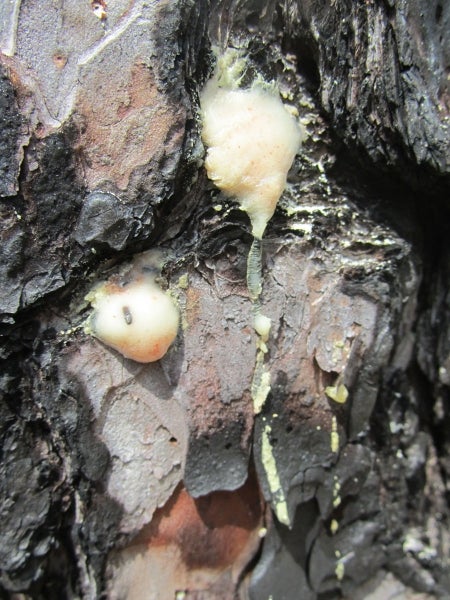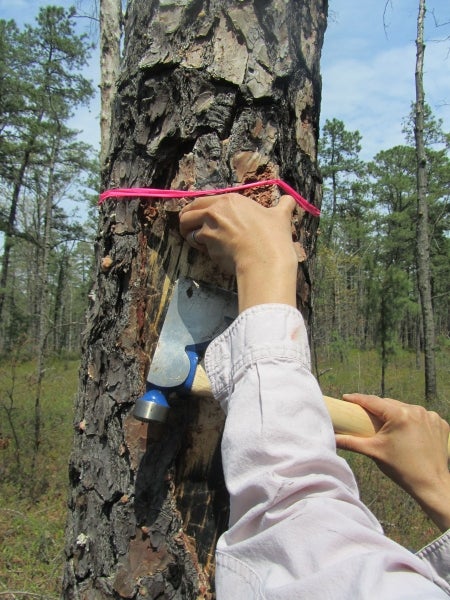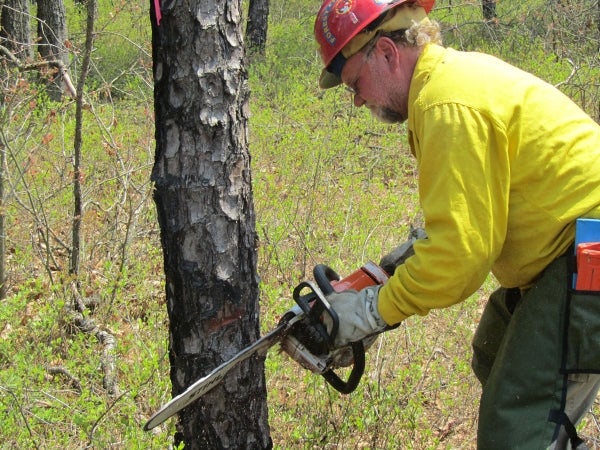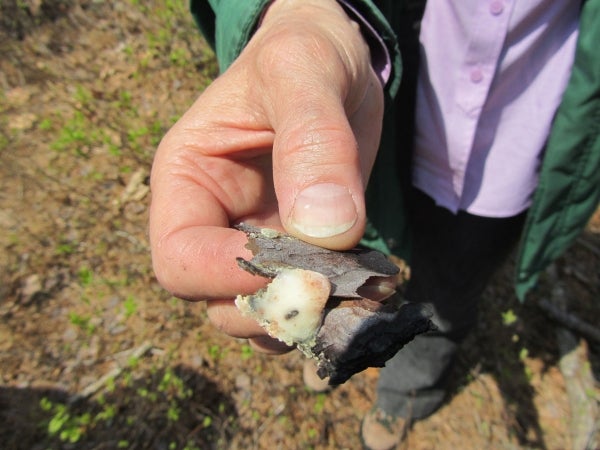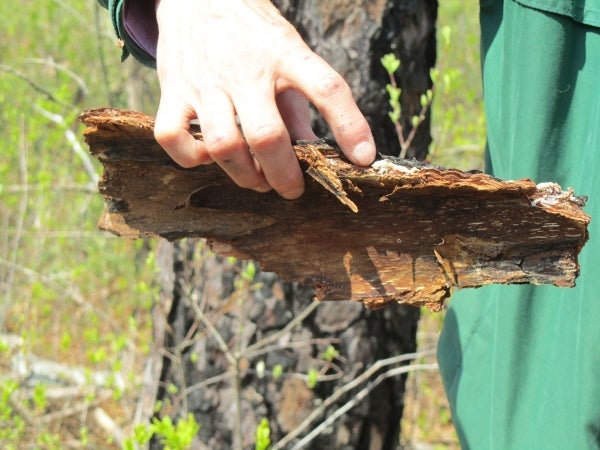New Jersey battles pine beetles
The southern pine beetle is about the size of a grain of rice, but it has been destroying pine forests in the southern United States for decades. Last year, it devastated a record 14,000 acres in southern New Jersey. This spring, foresters are battling to prevent the fast-moving infestation from jumping the Mullica River and spreading north into the heart of the Pinelands.
Targeting hot spots
About a dozen trees in a pine stand in Wharton State Forest are marked with pink ribbons, waiting to be chopped down. Most bear the telltale signs of infestation–gooey balls of sap the trees expel in an effort to push out the beetles crawling around under the bark. They look like wads of chewing gum stuck to the tree.
In this stand, state forester Lynn Fleming said the infestation probably started in a tree that had already been compromised by a lightning strike. The beetles land on a weakened tree, then nest in the trees’ cambium layer, right beneath the bark.
“That’s where the tree gets all its water and nutrients,” Fleming said. “So when the larvae–and beetle itself–chew that layer, the tree doesn’t get any food or water anymore and, that’s what kills the tree.”
The small patch of infected trees was identified by its yellow-brown canopy on one of the weekly aerial surveying missions the state has instituted. Now the affected trees, as well as some healthy buffer trees, will be chopped down to kill the beetles and contain the spread.
The state plans to do flyovers of the area at least weekly, and do similar spot-treatments whenever they see an affected area. But they have to act quickly.
“It’s very fast moving,” Fleming said. “Once we see a sign of it, we estimate we have about two weeks to come in and cut down the trees.”
Need for a long-term solution
Experts say treating these hot spots is the best short-term suppression plan. But in the long run, private forester Bob Williams said New Jersey’s pine forests need to be more actively managed to prevent the crowding that makes trees vulnerable to infestation in the first place.
“We’ve had sort of a hands-off policy that if we just protect all this land and keep development, out everything will be fine,” Williams said. “That simply isn’t the case.”
Williams, the first to discover the pine beetle in New Jersey in 2001, is frustrated with how slow state has been in reacting to the threat.
Pine beetle damage last year was worse than all the damage since 2001 combined, likely due to high temperatures and a dry summer. Foresters say there were not enough icy nights this past winter to kill off the beetles burrowed under the bark, so this year could be as bad as or worse than last.
Pine beetle infestations struck Delaware hard in the 1990s but are not currently a threat. Pennsylvania officials are keeping an eye out for the beetle as part of regular monitoring activities, but the state does not have many trees that are susceptible to the beetle.
WHYY is your source for fact-based, in-depth journalism and information. As a nonprofit organization, we rely on financial support from readers like you. Please give today.


